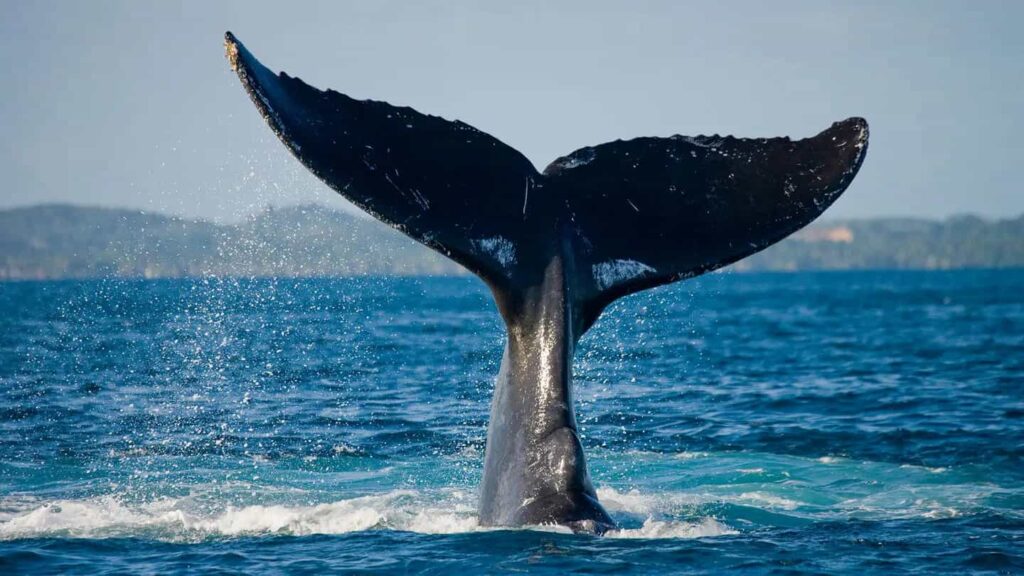
In the vast expanse of the North Pacific Ocean, amidst the undulating waves and endless horizon, a silent drama unfolds—the story of humpback whales. These majestic creatures, once on the verge of extinction, have witnessed a tumultuous journey towards recovery, only to face new challenges in an ever-changing environment. Amidst this narrative, scientists have turned to an unlikely ally: artificial intelligence (AI). With a method akin to facial recognition, researchers are unraveling the secrets of whale tails, shedding light on urgent news about humpback whale populations.
A recent study published in Royal Society Open Science unveiled a troubling revelation: a 20% decline in North Pacific Ocean humpback whale populations over the past decade. The culprits? Climate change looms large, with a heat wave emerging as a potential contributor. Leveraging an AI-powered photo-scanning tool reminiscent of facial recognition, researchers meticulously analyzed over 200,000 photographs of humpback whales spanning from 2001 to 2022. Unlike facial recognition models criticized for their inaccuracies in identifying non-white individuals, this AI model was trained to discern unique identifiers on a whale’s dorsal fin, akin to a personalized fingerprint.
These identifiers, ranging from marks and pigmentation variations to scarring and size discrepancies, serve as distinct signatures for each whale. Through successful photo matches, researchers extrapolated estimates for humpback whale populations over time, providing crucial insights into their conservation status. The images fueling this AI-powered endeavor are sourced from a diverse array of contributors, including scientists and enthusiastic citizen scientists, united under the banner of a nonprofit called HappyWhale. With its vast repository of whale tail images coupled with location data, HappyWhale serves as an invaluable resource for researchers.
Prior to the advent of AI assistance, experts grappled with the arduous task of manually combing through individual whale tail photographs—a laborious and time-consuming process. However, with the integration of image matching technology, this process has been streamlined, affording researchers more time to delve into population dynamics and migration patterns. Philip Patton, a Ph.D. student at the University of Hawaii at Manoa, extols the virtues of this AI algorithm, emphasizing its role in expediting information gathering and facilitating timely management actions.
The decline in humpback whale populations paints a sobering picture, with climate change emerging as a potent force reshaping their habitat. Despite witnessing a resurgence following the cessation of commercial hunting, humpback whales now face a precarious future. The population, which peaked at approximately 33,488 in 2012, has steadily dwindled, plummeting to 26,662 by 2021—a stark decline of 20%. Researchers attribute this downward trend to a record heat wave, characterized by soaring ocean temperatures and dwindling nutrient-rich waters.
The ramifications of this historic heat wave reverberate across the marine ecosystem, disrupting the delicate balance upon which humpback whales depend. Declines in phytoplankton biomass, triggered by warmer temperatures, have cascading effects, impairing the availability of vital food sources such as krill. While acknowledging the potential impact of ship collisions and entanglements, researchers contend that these factors alone cannot account for the entirety of the population decline. In their words, “advances have shifted the abundance estimation paradigm from data scarcity and periodic study to continuous and accessible tracking of the ocean-basin-wide population through time.”
Beyond the realm of humpback whales, facial recognition technology finds application in diverse conservation efforts. From tracking populations of cows, chickens, and salmon to analyzing facial cues in domesticated sheep, the potential of AI transcends species boundaries. Some researchers have even utilized photo matching software to reunite lost pets with their owners, underscoring the versatility of these algorithms in addressing multifaceted challenges.
These endeavors underscore the transformative power of AI in conservation, offering unprecedented insights into wildlife populations and their habitats. Accurate population estimates, facilitated by image recognition algorithms, serve as invaluable tools for policymakers and conservationists alike, guiding efforts to safeguard endangered species and preserve biodiversity.
In conclusion, the convergence of AI and conservation heralds a new era of discovery and intervention. As scientists continue to harness the capabilities of technology, we embark on a collective journey towards a more harmonious coexistence with the natural world—one where the tales of whale tails intertwine with the boundless possibilities of artificial intelligence.